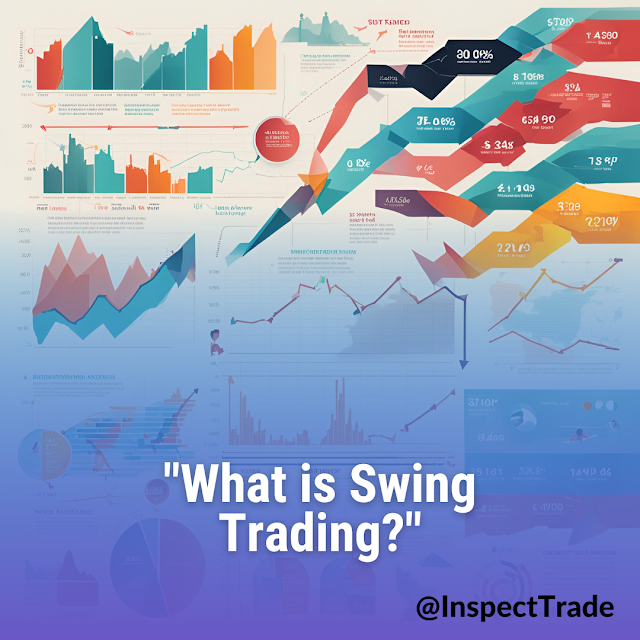Day Trading vs. Swing Trading: Which One is Right for You?
Introduction
Trading in financial markets offers various opportunities, but choosing the right approach is crucial for success. Two of the most popular trading styles are day trading and swing trading. Each has its own advantages, risks, and requirements. If you're considering entering the world of trading, understanding these two methods will help you decide which one suits your lifestyle, risk tolerance, and financial goals.
What is Day Trading?
Day trading involves buying and selling financial instruments within the same trading day. Traders close all positions before the market closes to avoid overnight risks. It is commonly practiced in stock markets, forex, and cryptocurrency trading.
Key Characteristics of Day Trading
- Short holding period: Trades last from a few seconds to several hours.
- High trading frequency: Multiple trades per day.
- Leverage usage: Many day traders use leverage to maximize gains.
- Technical analysis focus: Charts, indicators, and patterns drive decision-making.
- Time commitment: Requires full attention and active monitoring of the market.
Pros of Day Trading
- Potential for Quick Profits: Due to the high frequency of trades, day traders can make substantial profits in a single day.
- No Overnight Risk: Since positions are closed by the end of the trading session, there is no risk from overnight market fluctuations.
- High Liquidity Opportunities: Day traders target liquid markets, ensuring easy entry and exit from trades.
Cons of Day Trading
- High Stress Levels: The fast-paced environment can be mentally exhausting.
- Requires Significant Time Commitment: It’s nearly a full-time job with constant market monitoring.
- Higher Transaction Costs: Frequent trades mean higher commissions and fees.
What is Swing Trading?
Swing trading involves holding trades for several days to weeks, aiming to profit from short- to medium-term price movements. Unlike day traders, swing traders do not need to monitor the markets continuously.
Key Characteristics of Swing Trading
- Longer holding periods: Typically ranges from a few days to weeks.
- Fewer trades: Usually a few trades per week.
- Uses both technical and fundamental analysis: Swing traders often analyze trends and company performance.
- Less time-intensive: Suitable for those who cannot dedicate an entire day to trading.
Pros of Swing Trading
- Lower Time Commitment: Traders do not need to be glued to the screen all day.
- Potential for Larger Profits per Trade: Swing traders capture larger price moves compared to day traders.
- Less Stressful: Fewer trades and longer holding periods reduce stress levels.
- Lower Transaction Costs: Fewer trades mean reduced fees and commissions.
Cons of Swing Trading
- Exposure to Overnight and Weekend Risks: Market gaps and unexpected news can lead to losses.
- Requires Patience: Trades may take days or weeks to become profitable.
- Risk of Trend Reversal: Market trends can shift unexpectedly, affecting trade outcomes.
Key Differences Between Day Trading and Swing Trading
Which One is Right for You?
Choosing between day trading and swing trading depends on several factors:
1. Time Availability
- If you can dedicate full time to trading and enjoy fast-paced decision-making, day trading is a better choice.
- If you have a job or other commitments, swing trading is more practical.
2. Risk Tolerance
- If you can handle high stress and short-term fluctuations, day trading might suit you.
- If you prefer a less intense trading style with moderate risks, swing trading is better.
3. Capital Requirement
- Day trading often requires more capital due to frequent trades and leverage.
- Swing trading requires moderate capital and is less reliant on leverage.
4. Personality and Trading Style
- If you enjoy making quick decisions and thrive in fast-moving environments, you may prefer day trading.
- If you are patient and prefer analyzing longer-term trends, swing trading is ideal.
Conclusion
Both day trading and swing trading offer opportunities to profit from the financial markets. The right choice depends on your lifestyle, risk tolerance, and financial goals. If you enjoy fast-paced action and can commit full-time, day trading may be your best bet. However, if you prefer a more relaxed approach with less screen time, swing trading is a better option.
No matter which style you choose, proper education, discipline, and risk management are essential for success. Take time to practice with demo accounts before committing real capital, and always stay informed about market trends and economic events. Happy trading!




Comments
Post a Comment